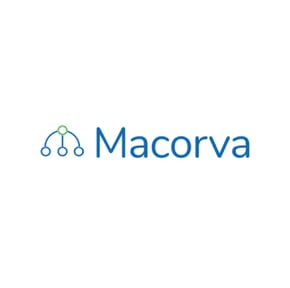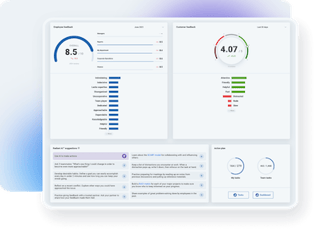
Why Company Engagement Depends on Employee Feedback
It’s no secret that employee engagement is important for any company. When employees are engaged in their work, they show commitment to the company and its goals, raise their productivity, and are 87% less likely to leave voluntarily. This leads to higher profitability and lower turnover rates even amid tumultuous changes in workforce expectations.
Yet, employee engagement is a complex and nuanced aspect of business management. While one employee might be motivated by certain work conditions, team dynamics, and levels of compensation, another might be disheartened by the same conditions.
Seeking to understand the nuances of worker motivation, 89% of managers reported in 2023 that employee feedback was their most effective tool in increasing engagement. In this article, we’ll explore how top-performing businesses use feedback to increase productivity and company engagement through topics such as employee autonomy, psychological safety, and the impact of automated workforce management on feedback strategies.
Empowers Employees through Autonomy
Employees need a voice in their workplace to feel engaged, as evidenced in a 2020 study by Weis and Zacher, titled, “Why and when does voice lead to increased job engagement?” They demonstrated that providing employees an outlet to voice their experiences, motivations, and frustrations led to higher productivity and engagement, even when the feedback was critical.
In giving employees a space to voice both positive and negative experiences, the researchers clarified the difference between a “supportive voice” and a “constructive voice,” which can be summarized this way:
- A supportive voice focuses on praising the status quo
- A constructive voice challenges the status quo in a positive way
While a supportive environment is effective in moderation, a constructive environment encourages feelings of autonomy by allowing employees to feel that their experiences, ideas, and perspectives matter even when they seem critical.
By asking for feedback, managers send the message that the company and its leaders want to hear what employees have to say. When employees feel recognized, they are more likely to reciprocate with a stronger sense of engagement and commitment.
This feeling of employee autonomy is even stronger when employees can provide feedback about each other. Peer-to-peer and 360-degree feedback play a vital role in identifying employees with high leadership potential, especially those with low visibility. Peer-driven feedback shines a light on employee contributions, giving talented employees a better chance to be recognized by management for their full potential.
Builds Trust with a Culture of Psychological Safety
Every HR manager should consider the psychological safety of their workplace when implementing changes to their feedback culture. Employees need to feel that it is safe to give feedback without fear of being punished, criticized, or fired.
This requires open communication among co-workers and between employees and leaders. When employees feel safe to express their opinions, businesses can create continuous learning environments where constructive feedback, both positive and negative, is valued. This requires an HR department devoted to helping employees connect their feedback to the actions they should take next to improve.
How important is psychological safety in your business? According to Amy Edmondson, a professor at Harvard Business School, it depends on the industry. She said, “The relationship between psychological safety and performance is stronger in situations where the results or work aren’t prescribed.”
In other words, the more collaborative and creative the work, the more that psychological safety plays a role in the engagement and satisfaction of your workplace.
Encourages Continuous Improvement through Regular Feedback
Feedback frequency is crucial to building a culture of open communication. It should be timed to ensure employees feel heard and recognized without becoming overwhelmed.
According to Gallup data, addressing recent work with effective feedback leads to a sense of recognition, making employees four times more likely to engage with their company’s objectives. This has become easier with the shift away from annual performance reviews to a more effective continuous feedback model.
By delivering feedback continuously, managers can prevent employees from stressfully wondering about their performance. Industry-leading HR managers agree that between 15 and 30 minutes of feedback every week boosts productivity and engagement better than traditional annual review strategies.
In short, you can’t improve what you don’t fully understand. Employee feedback provides managers with more complete views of the protocols and relationships that drive engagement and detract from it. Asking the right questions is a great place to start to develop a baseline understanding of current employee engagement. Employee feedback examples like “Do you have the resources you need to be successful?” and “Do you enjoy working with your team?” open the floor for employees to regularly participate and invest in their performance.
Drives Progress with Modern Feedback Tools
In recent years, feedback tools have evolved from mere questionnaires to fully featured platforms that help managers collect and organize feedback for their entire workforce. Advanced performance management suites now use generative AI to provide targeted questionnaires and unbiased performance evaluations.
These AI tools can collect and analyze feedback for development trends, creating personalized roadmaps tailored to each employee’s needs. HR managers can use these tools to maintain credibility while tailoring the feedback experience to the changing goals of their workplace.
Some example use cases include:
- Real-time Feedback Analysis: Using AI, managers can receive real-time insights from ongoing feedback, enabling them to promptly address issues and provide immediate support or recognition. This fosters a more responsive and supportive work environment.
- Employee Engagement Tracking: AI platforms can continuously monitor employee engagement levels through feedback, identifying any dips in morale or satisfaction. This allows managers to proactively address concerns and maintain high levels of employee engagement.
- Trend Identification: AI can identify broader development trends within the organization by analyzing collective feedback data. This allows HR managers to implement strategic training programs and initiatives that address common areas of need.
Keeps Remote Workers Connected
Several recent studies have linked remote work positions to a productivity decrease of between 8 and 19 percent. Despite this, the demand for remote and hybrid work positions is on the rise, with about 22% of the workforce predicted to be working remotely by 2025.
With a more disparate workforce, HR managers struggle to provide accurate and timely feedback to employees. Workforce management software provides the most effective and scalable solution to the problem of maintaining continuous learning between remote and on-site employees, including remote work feedback. They facilitate regular check-ins, real-time performance reviews, and continuous development opportunities, helping to bridge the gap created by physical distance. This approach not only enhances productivity but also fosters a sense of inclusion and belonging among remote workers, ensuring they remain aligned with the company’s objectives and culture.
Case Studies on Successful Implementation
The most recent Harvard Business Review Analytic Services Research Report shared key findings from nearly 1,000 executives on the role of engagement in the modern workplace. 56% of respondents stated that investing in employee engagement positively impacted their ROI. 81% strongly agreed that engaged employees are more productive.
Despite this consensus, only 60% of respondents believe they have sufficient access to employee engagement data. Only 45% said their organizations employ consistent feedback tools across their workflow.
In summary, HBR demonstrated that while engagement drives employees, feedback tools drive engagement. Therefore, investments in workforce engagement are, as people analytics professor Heather Whiteman said, “the best possible return on investment for your human capital."
You can read the full report here.
Conclusion
Put simply, the point of asking for employee feedback is to act on it. This creates a continuous feedback loop that gives employees a more active role in improving workplace culture and engagement. As employees continue to observe how their feedback shapes workplace policies and programs, they are more likely to demonstrate commitment to their organization.
Seeking this commitment, top-performing businesses invest in their employees’ autonomy, psychological health, and feedback process. This can mean leveraging personalized coaching to help managers develop their leadership styles, developing corporate training programs to provide more self-directed learning options, as well as employing workforce management software to automate and streamline the feedback process. Adopting updated strategies and tools for employee feedback helps businesses stay ahead of their competition in getting, keeping, and engaging the talent they need.
To dive deeper into the latest feedback tools and strategies that can help improve your profit margins, boost productivity, and enhance employee commitment explore these resources:

Macorva
Macorva is dedicated to helping you not only gather unfiltered data, but make sense of it. Our industry-leading team of software developers never stops refining Macorva to pick up on subtleties that can help you build a better business.




